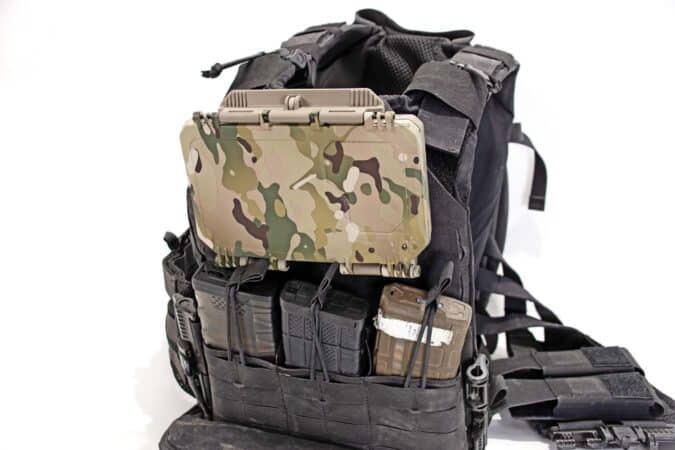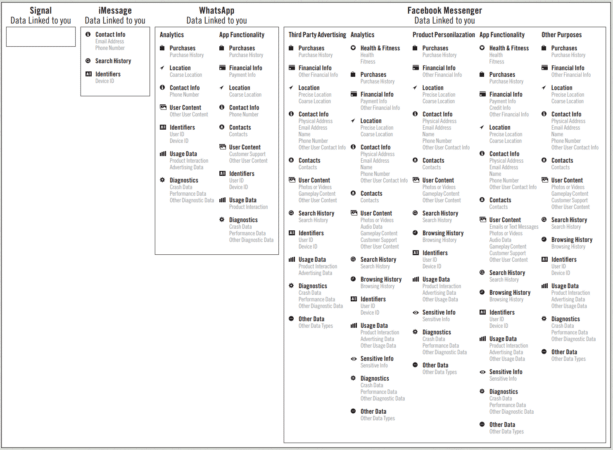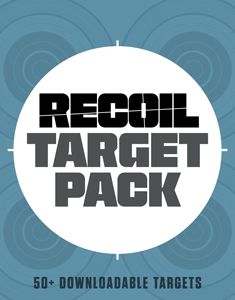Secure Comms For The Concerned Civilian
You’re Not the Client, You’re the Commodity. Can We Reclaim Privacy?
Photos by Kenda Lenseigne
According to laws just passed in Congress, the government has mandated that you now must carry a tracking device, so they can monitor your every movement, what you’re buying and thinking about, and everyone you associate with.
And they want you to pay for it. Hey, if you have nothing to hide, you have nothing to fear, right? Echoes of Orwell’s dystopian 1984, much?
OK, so the government didn’t actually make this a legal requirement. But what’s worse is that we’ve all voluntarily opted in to a surveillance society, and for the most part, any notion we may have had of privacy in our day-to-day affairs is dead.
That smartphone you have in your hand or pocket right now is spying on you. What’s worse, you’re the one who gave it permission to do so. Certain apps are worse than others, but most will capture at least some data regarding your usage, location, and contacts, all of which can be linked via your credit card information to the things you buy.
Your phone knows what images you look at, what you share with your friends, the articles you read, what you find funny, and what pisses you off. If you think that data is treated like the crown jewels by the companies that collect it, think again — data breaches abound, which can result in all your most sensitive information being traded on the dark web. And for the most part, there’s nothing you can do about it. Or is there?
A couple of years ago, I ran into Blackwater founder Erik Prince in a corridor at SHOT Show. “I’ve got something to show you,” he explained, while fishing in the pocket of his immaculately tailored jacket. With a flourish, he pulled out an object that was immediately recognizable as a sock.
While the thought crossed my mind that a Blackwater line of men’s hosiery products might not be a bad idea, from the sock in question, Prince slid out a cell phone. “That,” he triumphantly explained, “Is a shot into the flank of big tech.” And so the Unplugged phone was announced to the world. Since then, the prototype has become reality, and the Unplugged phone joined the ranks of cellphones designed specifically to protect its users’ data.
This segment of the market has been rife with scams, ever since grifters discovered people with legitimate privacy concerns would pay so that their every move wouldn’t be tracked. For example, 2021 saw the launch of the Freedom Phone, marketed to a conservative audience as a way to counter big tech surveillance.

On closer examination, this turned out to be a rebranded, cheapo Chinese, low-end phone in a MAGA wrapper, and pushed by purveyors of synthetic outrage like Candace Owens and Ian Miles Cheong. It probably surprised no one when the company self-destructed in a flurry of lawsuits between its founders, after bilking its customers at 500 bucks a pop.
Before that was the Anom, a phone touted as being immune to surveillance and marketed to organized crime as a way of concealing shady deals from law enforcement, which turned out to be an FBI honeypot. Against that backdrop, consumers are justified in being extremely wary.
The UP phone uses its own OS, based on a fork of Google’s Android operating system, but customized to avoid the routine data collection of both Google and Apple. It features its own app store that’s selective in the products it carries, based on their data collection and security characteristics, so some familiar names are notable by their absence.
If you use messaging apps such as Telegram or WhatsApp, you’ll wind up with less familiar versions that don’t harvest data like their regular counterparts. There’s a definite learning curve, and in some cases, you’ll have to make the decision to trade convenience for privacy — there are no Google apps, so if you’re a die-hard fan of being tracked by Alphabet, this is not the device for you.


The company has developed its own secure messaging application, as well as a VPN and email service, which is claimed to be one of the most secure out there, and there are neat touches such as a physical switch to kill the connection between the phone and its battery, as well a quick means to wipe all data from the device. While we’re by no means experts in this field, the physical device feels and performs like a quality item, rather than something you’d get from Aliexpress.
It’s a new phone, from a new company, so there are still a few bugs. At one point, we experienced some annoying latency issues that were fixed with an update. The phone itself is far from tiny — if you have small hands you may want to skip this one. We actually found the physical size of the phone an asset when using ATAK, as the screen can be cluttered when using a lot of plugins.
It remains to be seen whether the UP phone will become a serious alternative to the established players, but given Prince’s track record in creating successful businesses, we’d be surprised if it flopped.
As to whether its claims of data protection hold up, the jury is still out. The worst-case scenario is that your info winds up in hands of the same data brokers as it does right now, just via a different route. Best case, you take back control of your private affairs, and cease being a commodity to be bought and sold. We’re giving them a long-term test in both the U.S. and overseas, and so far, results are positive.
SHTF
So much for the day-to-day. What happens when the cell network goes down? Is there a way to communicate with your tribe that’s not dependent on Verizon or T-Mobile and is resistant to eavesdropping? The stock, old-school answer would be to fire up the HAM radio, but there’s a significant barrier to entry to this solution — you, and your entire team, need to pass an exam before keying that mic, or else crusty old guys with nothing better do will hunt you down with a fervor not seen since the days of Nicolai Cecescu.
Mesh networks provide their users with an alternative means of communication that, due to their dispersed nature, is highly resilient. Each node on the network consists of a radio broadcasting on the LoRa (long range) protocol that can send and receive, but also acts as a relay for other devices in the network.

Say your radio has an effective range of three miles, but the guy you want to send a message to is five miles away. If there’s another device somewhere between you, your message will hop from device to device in order to reach its intended recipient. Each device can be paired with a cell phone, providing a familiar and easy-to-use interface.
Set up a node on a high point within your home territory, and you’ll massively increase the area in which you have comms.
It doesn’t take much imagination to come up with solutions involving a cheap LiFePo4 battery, solar charger, and mesh network device to provide a low-cost means of blanketing an area with your very own, independent communication system, which, for the moment at least, doesn’t require the blessing of the federal government.
We tested this concept in the Donbas region of Ukraine, using some of the cheapest mesh network devices on the market, consisting of a Heltec LoRa V3 chip set in a 3D-printed case running Meshtastic firmware and powered by an internal rechargeable cell. You’d be correct in thinking that sounds like a lot of geeky nerdspeak, but once you dig into the subject, it’s actually pretty easy to get to grips with, even for the tech-challenged — the University of YouTube runs classes.
This combo connected via Bluetooth to our UP phone, stashed in a Thyrm DarkVault case, with the whole shebang riding on our plate carrier. Additional devices were placed in vehicles as mobile base nodes, and there was discussion of putting one on a drone, though this was never actualized.
The ATAK app provided team members with a means of identifying friendly force locations, and we stayed in touch via text messages bounced throughout the network, despite the electromagnetic spectrum being polluted with electronic warfare emissions.
This setup was used to provide secure comms and location info within our team, entirely independent of the local cell network. As a matter of course, whenever we’re in range of Russian ISR drones, cell phones are set to airplane mode, as Orlan-10 drones can have the ability to spoof cell towers, getting cell phones on the ground to reveal their location for targeting by indirect fire.
By using low-powered Bluetooth emissions, further attenuated by the Thyrm DarkVault case, we’re able to stay hidden in background clutter, as the mesh network device transmits only when it has data to send, and its transmission length is measured in milliseconds. The downside to the system we used is that it’s not able to send voice transmissions.
Let’s say you’re intrigued by the possibility this offers and want to investigate further or just jump right in and set up your own LoRa mesh network.

What options are available? Glad you asked.
Like building your own AR allows for a deeper understanding of the mechanism and equips the user with troubleshooting tools, building your own mesh network devices provides a degree of insight not possible with off-the-shelf units. Just like rolling your own rifle, it’s also cheaper. If you don’t fancy busting out the soldering iron, there’s a whole ecosystem of mesh network fans who are only too eager to share their knowledge. Some of them have Etsy stores with completed devices, based around commonly available chip sets.
Stepping up several notches, electronics company Otto, familiar to the shooting community via their excellent hearing protection products, has a nifty mesh network device known as LynqPRO. It has the added benefit of offering frequency hopping to increase security, as well as an easy, on-device interface that integrates with phones and tablets. It’s also compatible with ATAK.
WHEN FAILURE IS NOT AN OPTION
Some of us have greater security concerns than others. Due to working in conflict zones, we’re acutely aware of the threat from both state actors and local freelancers and take digital hygiene very seriously.
On one recent assignment, two days after we left, the building we were working out of was targeted by a pair of missiles. One impacted in the street outside, peppering a local maternity clinic with frag, while the other scored a direct hit, blowing out the center of the structure. We’re reasonably sure we weren’t compromised by our digital footprint — HUMINT was the likely source — but it brought home the consequences for failure.
While it’s impossible to erase all evidence of our presence, there are a number of steps we take in order to fade into the background. If you’re concerned about being targeted when heading overseas, here are a few tips.
Protect Your U.S.-Based Devices.
We’re all guilty of storing way too much compromising information on our phones — anything from sensitive files from work, contacts, social media accounts, home addresses, and images of our families.
If possible, leave your U.S. phone at home and take a burner with you, loaded with the bare minimum of info needed for the task in hand. Toss it in the trash at the airport on the way out. If you must take your U.S. phone, never charge it in a public location, such as a hotel.
USB cables work both ways, and intelligence services have been known to harvest data and install software using this method. While you could use a charge-only cable, there’s always the possibility this could be swapped out without your knowledge, or you could slip up and use the spare you brought — you know, the one with data transfer ability intact.
It’s far safer to use a USB cable to charge a power bank then use the power bank to charge your phone.
Use A Local SIM Card
Or one from a neighboring country, but preferably a card that doesn’t require an ID for purchase. Pinging foreign cell towers with a U.S. number is like waving Old Glory as you walk down the street.
Turn Off All Location Services
These will rat on your whereabouts. If you need to navigate, download off-line versions of mapping software to your device.
Use A VPN
Using a VPN to encrypt your online activity makes it difficult for eavesdroppers to see what you’re doing, while concealing your IP address.
Preferred SOP
These days, our preferred SOP is to remove the SIM card in our U.S.-based phone and power it up to connect only via trusted Wi-Fi locations when it’s absolutely necessary to use the data stored on it. The rest of the time, we communicate via encrypted messaging apps such as Signal, loaded onto an UP phone running a local SIM card and a third nation E-SIM.


NEXT STEP: Download Your Free Target Pack from RECOIL
For years, RECOIL magazine has treated its readers to a full-size (sometimes full color!) shooting target tucked into each big issue. Now we’ve compiled over 50 of our most popular targets into this one digital PDF download. From handgun drills to AR-15 practice, these 50+ targets have you covered. Print off as many as you like (ammo not included).
Get your pack of 50 Print-at-Home targets when you subscribe to the RECOIL email newsletter. We’ll send you weekly updates on guns, gear, industry news, and special offers from leading manufacturers – your guide to the firearms lifestyle.
You want this. Trust Us.
Read the full article here


